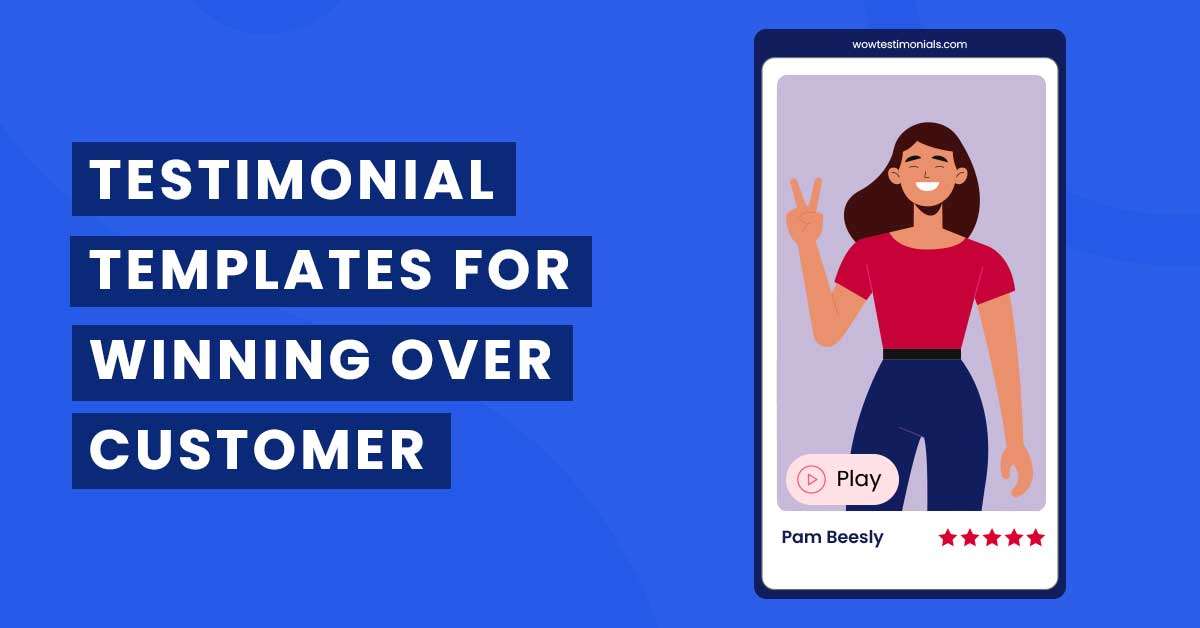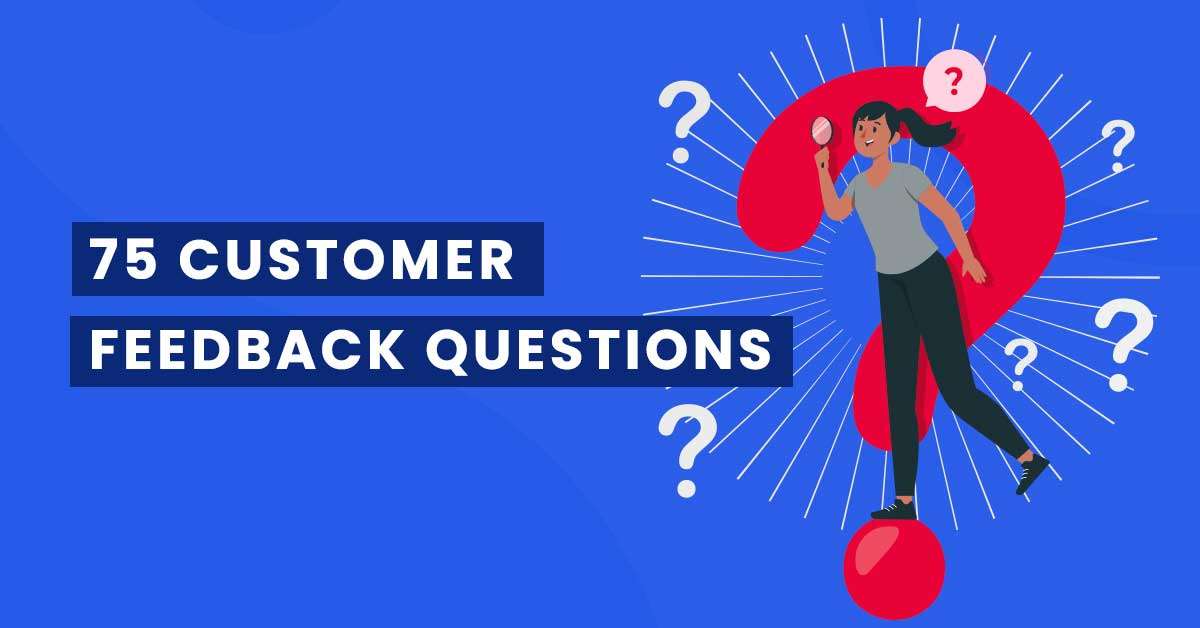A potent technique for organisations wanting to develop credibility, trust, and social proof is testimonial marketing. It entails leveraging pleased consumers’ glowing testimonials and successful experiences to advertise a good or service.
Testimonials can take many forms, including written testimonials, video testimonials, social media posts, and more. Using testimonial marketing, you can even increase potential clients’ confidence and credibility while demonstrating the utility and worth of your product or service through using third parties.
Adding this method to your marketing strategy becomes super important because it enhances your brand’s customer conversion rate. We recommend that you include customer testimonials in prominent locations across your marketing campaigns (such as on a landing page that receives a lot of traffic or in an email marketing campaign).
Testimonials are a form of social proofing. When you run your ads with your copy to inform your customer how your product/service benefits them, testimonial marketing puts your existing customers in the spotlight, and they speak for your product/service on your behalf.
Here’s a look at some quick stats that tell us the importance of testimonials from your customers:
- An estimated 72% of customers say they trust a business if it has positive testimonials
- Regularly leveraging customer testimonials may increase your brand’s revenue by 62%.
- An estimated 92% of consumers believe a non-paid endorsement (testimonials) more than paid advertisements before making purchasing decisions
Why is Testimonial Marketing Important?
Testimonial marketing can be one of your most powerful instruments for building trust and maintaining customer credibility. As a marketer, you have a ton of marketing strategies to boost your brand’s sales and expand its customer base.
However, we feel that video testimonials are the best marketing strategy. Here are a few reasons why:
1. Social proof:
Testimonials provide social proof that your product or service is valuable and effective. When potential customers find out that other customers have had positive experiences with you, they’re more likely to trust and choose your product or service.
2. Emotional connection:
Testimonials can help potential customers feel emotionally connected with your business. When existing customers talk about their positive experiences with your product or service, they feel good about choosing it.
3. Increased Credibility:
Testimonials from real customers are often seen as more credible than marketing messages from the business itself. Potential customers are more likely to believe that your product or service is effective.
What to keep in mind when creating a testimonial?
1. Keep them short, sweet and simple
Nobody wants to waste time in watching a long, drawn-out video testimonial. Keep your testimonial video short and sweet, highlighting the key points that will resonate with viewers. A 1-2 minute video length would keep your viewers engaged.
2. Make them relatable
Your video testimonials should be relatable to your target audience. Choose customers that reflect the demographics of the people you’re trying to reach with your campaign.
3. Use engaging visuals and audio
Ensure your video testimonials are well-lit and shot in an exciting and visually appealing location. In addition, the audio should be clear so viewers can easily understand what’s being said.
4. Tell a story
People love stories, so make sure your video testimonials have a flow and tell a story.
Tips On How To Create Engaging Testimonials
1. Keep it Crisp and Engaging
We live in the age of instant solutions where our attention spans have been reduced to less than a minute thanks to the wave of reels and short videos presented on social media platforms. Therefore, you need to keep in mind the duration of your customer’s video testimonial and plan accordingly.
Ensure that the videos are crisp and concise. Gone are the days when people enjoy lengthy advertisements. Always remember that the ideal length for a video testimonial is under 2 minutes.
Making a video out of all of these brief but effective testimonials is one of the effective ways to use them. Such compilations might be utilised for lengthy video platforms, or you can publish the sharper bytes one at a time on your other business channels.
2. Directly Address Your Target Audience
Anybody who might be interested in your product or service is your target audience. You must first determine their problem to write a testimonial that concentrates on it. Once you identify it, you can create a message that explicitly tackles the problem your potential consumer is experiencing.
Remember that your testimonial videos reference what you can do for prospective clients, backed by several satisfied clients who can attest to it.
Remember that the primary goal of these testimonial videos is to persuade your audience to choose your goods or services. Therefore, focus these video testimonials on how your products can change your potential customers’ circumstances.
3. Build An Emotional Connection
Using statistics and data, it is essential to persuade potential clients about your business. For example, it’s crucial to relay that you assisted a particular number of individuals in resolving their issues or that your services are designed to match the budgets of those most in need. You must realise, nevertheless, that the majority of your potential customers are trying to find a solution to their difficulties.
The emotional bond comes into play at this point.
There is a good possibility that your viewers will convert if they relate to the people in your testimonial videos. In addition, you’ll have a wonderful marketing tool if an emotional quotient supports the testimonies.
Viewers are more inclined to trust your brand to assist them in overcoming their pain points when they see your existing customers who were frustrated or struggling with similar problems and how your products or services helped them overcome those problems.
4. Different Sizes for Different Platforms
Considering the various video sizes depending on the platforms used to post these testimonials is crucial. Different platforms accommodate videos of varying sizes and lengths. A 30-second testimonial video, for instance, can be made for an Instagram reel, or a 2-minute video can be submitted to YouTube.
When making video testimonials, it’s important to keep in mind not only their length but also their size. While YouTube allows for the upload of landscape-format videos, Instagram advises adopting portrait-style video formats for reels. Similar to YouTube, other platforms, including Facebook, LinkedIn, Twitter, and Pinterest, have natively set aspect ratios and lengths for videos.
To get the most views, it’s important to keep in mind that your testimonial films should match the platform’s stylistic requirements. And that’s when you need to use your skills as a video director.
No matter how you handle the video dimension in post-production, make sure your subject—in this case, your satisfied customer—is positioned so they are visible in the frame. Taking numerous footage supporting a distinct dimension is another approach to accomplish this.
5. Utilise Visualize Aids/Supers In Your Testimonial Video
This is a simple trick to emphasise your USPs and ensure your audience understands the main points without watching the complete video.
There is no denying that all of us have limited attention spans. Thus, consider how you’d convey your point if the audience watching the testimonial video needed to be more focused. Supers are the simplest way to accomplish it.
The texts that sporadically pop up in the video are called supers. These supers may take the form of a declaration, a quotation, or simply some words.
Insert supers between each byte as you edit the video testimony. The supers can be used to emphasise your primary offerings. You can even display statistics on how you have assisted your current clients, the different problems you have resolved, the positive customer feedback, etc.
As a result, even if the spectator is off-screen or muted, they can still learn something by reading the supers. Also, your video receives a break, making it less content-heavy but still educational.
Now that we have discussed the importance of video testimonials and various tips and tricks on creating video testimonials, here are a few examples of how brands showcase their video testimonials to attract new customers and build an aura of credibility around it.
Now that we’ve discussed the things such as the importance of testimonials and video testimonials in particular, ideas to keep in mind when creating a testimonial, and ideas to keep in mind when creating your testimonial, let us now move on to 9 proven testimonial templates to win over your customers.
9 Testimonial Templates That You Can Adapt For Your Brand
1. The Before and AfterTestimonial
The before and after testimonial is a type of testimonial that showcases the transformation or improvement a customer has experienced after using your product or service. This type of testimonial can be powerful as it highlights the tangible benefits of your product or service and shows potential customers what they can expect if they decide to use it.
The key to creating an effective before and after testimonial is to focus on the specific transformation or improvement the customer experienced. For example, if you’re selling a skincare product, the before and after testimonial could focus on how the product improved the customer’s complexion, reduced acne, or decreased the appearance of wrinkles.
It’s also important to include specific details about the customer’s experience, such as the time it took to see results or any other benefits they experienced while using your product or service.
When using before and after testimonials, it’s important to make sure that the before and after images or descriptions are realistic and not overly exaggerated. Customers can easily spot testimonials that are too good to be true, harming your credibility and reputation.
Example: “Before using XYZ product, my skin was dull and uneven. But after using it for just two weeks, I noticed a great improvement in my complexion. Now my skin looks healthy and glowing, and I always receive compliments.”
2. The Problem-Solution Testimonial
The problem-solution testimonial focuses on the specific problem the customer had before using your product or service and how your product or service provided a solution to that problem. This type of testimonial is effective because it helps potential customers relate to the problem and understand how your product or service can help them solve it.
When creating problem-solution testimonials, it’s important to focus on the specific problem that your product or service solves. For example, if you’re selling a weight loss program, the problem could be the customer’s inability to lose weight or keep it off, and the solution could be the effectiveness of your program in helping them achieve their weight loss goals.
It’s also important to provide details about how your product or service solved the problem. For example, if you’re selling a product that reduces back pain, the problem-solution testimonial could include details about the customer’s previous attempts to alleviate their pain (e.g. physical therapy, medication) and how your product provided a more effective solution.
When using problem-solution testimonials, it’s important to make sure that the problem is relatable to your target audience and that the solution provided by your product or service is believable and backed up by evidence.
Example: “I had been struggling with back pain for years, and nothing seemed to help. But after using ABC back brace, my pain has significantly reduced, and I can finally enjoy my daily activities without discomfort.”
3. The Social Proof Testimonial
The social proof testimonial leverages the power of social influence by showcasing the experiences and satisfaction of others who have used your product or service. This type of testimonial is effective because it reassures potential customers that your product or service is legitimate and reliable.
When creating social proof testimonials, it’s important to focus on the experiences and satisfaction of your customers. This could include customer reviews, ratings, endorsements, or case studies that demonstrate the effectiveness of your product or service.
It’s also important to ensure the social proof testimonials are relevant to your target audience. For example, if you’re targeting small business owners, you could showcase testimonials from other small business owners who have successfully used your product or service to achieve their business goals.
When using social proof testimonials, it becomes necessary to ensure they are genuine and trustworthy. This means avoiding fake testimonials or those that are overly positive and lack credibility.
Example: “I was hesitant to try XYZ product at first, but after I saw that many people were raving about it on social media, I decided to give it a try. And I’m so glad I did! It’s now become a staple in my daily routine.”
4. The Expert Testimonial
The expert testimonial is a type of testimonial that features endorsements or recommendations from recognised experts or authority figures in your industry or field. This type of testimonial can be powerful because it provides social proof from credible sources and reinforces the quality and effectiveness of your product or service.
When using expert testimonials, it’s important to choose endorsements or recommendations from respected and well-known individuals in your industry or field. For example, an endorsement from a well-known personal trainer or fitness influencer could be effective if you’re selling a fitness program.
Ensuring the expert testimonial is relevant to your target audience is also important. It showcases the specific benefits or features of your product or service that are important to them.
When using expert testimonials, you need to make sure that the endorsement is genuine and not overly promotional. Expert testimonials should provide valuable insights or recommendations that are relevant to your target audience rather than simply promoting your product or service.
Example: “As a professional athlete, I’ve tried countless supplements over the years. But I can honestly say that the DEF supplement is the best I’ve ever used. It’s helped me achieve new levels of performance and recovery.”
5. The Video Testimonial
The video testimonial is a type of testimonial that features a customer sharing their experience with your product or service on video. This type of testimonial can be particularly effective because it allows potential customers to see and hear from a real person who has used your product or service.
When creating video testimonials, ensure the customer is authentic and relatable to your target audience. The video should also be well-produced and visually appealing to capture the viewer’s attention.
It is also important to also make sure that the video testimonial highlights the specific benefits or features of your product or service that are important to your target audience. For example, the customer should share their experience in a way that highlights how your product or service helped them achieve their goals or solve their problems.
When using video testimonials, make sure that the video is easily accessible to potential customers. This means sharing the video on your website, social media platforms, or other relevant channels.
Example: (show a video testimonial of a customer sharing their positive experience with your brand’s product or service)
6. The Emotional Testimonial
The emotional testimonial is a type of testimonial that leverages the power of emotion to connect with potential customers on a deeper level. This type of testimonial typically features a customer sharing a personal story about how your product or service has positively impacted their life.
Emotional testimonials can be particularly effective because they tap into your target audience’s emotions and create a strong connection with your brand. When creating emotional testimonials, make sure you choose relatable stories that are relevant to your target audience.
It’s also important to make sure that the emotional testimonial is authentic and genuine. Customers who share personal stories should do so in a natural and unforced way. This means avoiding scripted or overly promotional language.
When using emotional testimonials, ensure that the story is told compellingly and engagingly. This means using visuals, music, or other elements to enhance the emotional impact of the testimonial.
Example: “After losing my job and struggling to make ends meet, I felt like I was at my lowest point. But then I discovered the GHI service, and it gave me hope. Thanks to their help, I was able to get back on my feet and turn my life around.”
7. The Customer Service Testimonial
The customer service testimonial is a type of testimonial that focuses on the quality of customer service provided by your business. This type of testimonial typically features a customer sharing their experience with your customer service team, highlighting how your team went above and beyond to solve their problem or provide exceptional support.
Customer service testimonials can be particularly effective because they demonstrate your commitment to customer satisfaction and highlight the level of service your customers can expect when they work with your business.
When creating customer service testimonials, it’s important to choose stories that showcase your customer service team’s unique value and benefits. This could include stories of how your team solved a complex problem or provided personalised support to a customer.
It is also important to also make sure that the customer service testimonial is genuine and authentic. This means avoiding scripted or overly promotional language and letting the customer share their experience in their own words.
When using customer service testimonials, you must ensure that the testimonial is easily accessible to potential customers. This means sharing the testimonial on your website, social media platforms, or other relevant channels.
Example: “I had an issue with my JKL product, and I was blown away by the level of customer service I received. The representative was so kind and helpful, and they resolved my issue quickly and efficiently. I’ll definitely be a lifelong customer.”
8. Press Testimonial
A press testimonial is a type of testimonial that comes from a third-party source, such as a media outlet, blogger, or other industry experts. This type of testimonial typically features a positive review or endorsement of your product or service from a reputable source.
Press testimonials can be particularly effective because they provide social proof and demonstrate that a trusted source has validated your product or service. When using press testimonials, it’s important to make sure that the source is relevant and respected within your industry or target market.
You can share press testimonials on your website, social media platforms, or other relevant channels to leverage them. You can also use them in your marketing materials, such as ads, brochures, or other promotional materials.
Example: “XYZ Company has revolutionised the industry with its innovative new product. It’s no wonder they’ve received such widespread recognition and acclaim, with experts and consumers raving about its effectiveness and ease of use. XYZ Company is a clear choice if you’re looking for a game-changing solution to [problem].”
9. Influencer Testimonial
An influencer testimonial is a type of testimonial that comes from an influencer in your industry or target market. Influencers are individuals with a large and engaged following on social media or other online platforms and can sway their followers’ opinions and behaviours.
Influencer testimonials can be very effective because they provide social proof and endorsement from a trusted source. In addition, when an influencer recommends your product or service to their followers, it can build credibility and increase brand awareness.
To leverage influencer testimonials, you can partner with various influencers from your industry or target market and ask them to share their experience with your product or service with their followers. This can include blog articles, video reviews, social media posts, and other types of content.
When working with influencers, it becomes important to make sure the influencers are a good fit for your brand and that their values align with yours. You should also ensure that any sponsored content is disclosed to their followers to maintain transparency and build trust.
Example: “I’ve been using [product/service] from XYZ Company for a few weeks now, and I have to say, I’m impressed. It’s made a huge difference in [problem], and I would surely recommend it to anyone looking for a solution. So if you want to [benefit], give XYZ Company a try!” – [Influencer Name], [Social Media Platform] influencer with [number of followers] followers.
These are some of the most tried and tested templates you can apply to your brand. Customer testimonials are one of the most organic methods to attract new customers to your brand, and these templates have been used by some of the most successful brands out there.
Buzzproof is a platform that allows you to ask, record, curate, and display your customer testimonials. Know more here.






